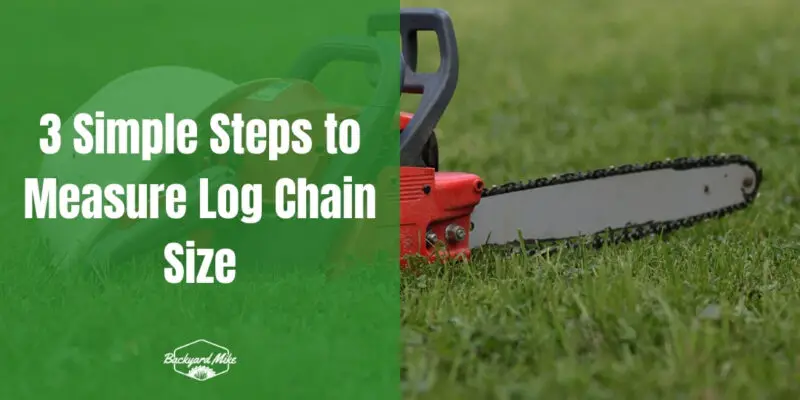To measure your log chain size, first gather tools like calipers and a tape measure. Prepare your chain by removing any slack and checking for damage. Next, measure the chain pitch by using calipers to gauge the distance between link centers or count three consecutive rivets and divide by two. Finally, guarantee longevity and compatibility through regular maintenance checks and lubrication. With these steps, you'll guarantee peak chain performance and discover additional nuances to evaluate.
Key Takeaways
- Use a caliper to measure the distance between the centers of adjacent chain links for precise pitch measurement.
- Clean the chain thoroughly before measuring to ensure accuracy and avoid errors from debris.
- Verify the chain's pitch, gauge, and length against standard size charts for accurate identification.
- Inspect the chain for wear, damage, or elongation before measuring to ensure reliable results.
- Utilize manufacturer guides or compatibility tables to confirm the chain's fit with your equipment.
Gather Necessary Tools and Prepare the Chain
Before you begin measuring a log chain, you'll need to gather the necessary tools and prepare the chain properly. Tool selection is essential, so start by choosing a caliper or vernier for precise measurements. A ruler or tape measure can be useful for broader dimensions, but they lack the precision of calipers. Don't forget tools for cleaning; a clean chain guarantees accurate measurements by removing dirt and debris. Accurate measurement prevents machinery downtime and financial loss, which is why ensuring proper interaction with sprockets and moving machine parts is crucial. Select a typical segment of the chain, avoiding any damaged links. Remove slack to eliminate any measurement errors, and check for damage like bends or rust.
Measure the Chain Pitch and Identify Components
To accurately measure the chain pitch and identify its components, start by understanding the basics of chain pitch. Chain pitch is the distance between the centers of adjacent links, vital for determining the correct chain types. For roller chains, measure between pin centers using a caliper for precise results. For saw chains, lay the chain flat, count three consecutive rivets, and divide by two to find the pitch. These measurement techniques guarantee accuracy and prevent inefficiencies. Drive links and rivets are essential components to take into account. Using digital calipers can improve measurement precision by zeroing out pin diameters. Verify your findings with data sheets or charts for standard sizes, confirming the right pitch for smooth operation and compatibility. It's important to ensure that the chain gauge matches the guide bar groove, as an improper fit can lead to inefficiency and potential hazards. Additionally, choosing low kickback designs in chainsaw chains can enhance user safety and reduce the risk of accidents while operating chainsaws.
Assess Chain Wear and Determine Compatibility
After measuring the chain pitch and identifying its components, shift your focus to evaluating chain wear and guaranteeing compatibility.
Chain maintenance is essential, as wear primarily occurs at the pins and bushings. Regularly inspect your chain using specialized wear assessment tools, like those in Tsubaki's kits, for accurate results. Aim to replace chains showing 1.5%-2% elongation to prevent slippage. Accurate measurement is crucial for performance, as different chains may require different measurement techniques to ensure precise assessments and maintenance scheduling. The Stihl Aggressive Chain is noted for its durability and precision, making it a reliable choice for those dealing with hardwood.
To determine compatibility, measure the chain's size with calipers, confirming it fits equipment specifications like gypsy notches. Consult compatibility tables or manufacturer guides for accurate sizing.
Proper lubrication, speed control, and environmental considerations play a significant role in prolonging chain life. Consistent maintenance and wear checks will guarantee your chain operates effectively, fostering a sense of reliability and belonging within your operational framework.
Frequently Asked Questions
How Do I Choose the Right Caliper for Measuring Chain Size?
You'll want digital calipers for precision, but analog calipers offer reliable results at a lower cost. Choose based on your budget and needs. Make certain your chosen caliper fits the chain's size and material for accurate measurements.
What Safety Precautions Should I Take While Measuring Chains?
While measuring chains, guarantee chain safety by using precise measurement tools like calipers. Keep your hands clear, avoid sudden movements, and guarantee good lighting. Regularly inspect for wear, guaranteeing you belong to a safe and efficient workplace.
Can Chain Size Measurement Affect Machine Performance?
Yes, your chain size measurement accuracy directly impacts chain performance. When you're precise, you guarantee machinery runs smoothly, reducing stress and wear. As part of our community, maintain these standards to keep equipment efficient and reliable.
How Often Should I Measure My Chain for Maintenance?
You'll want to measure your chain at regular intervals, aligning with your maintenance schedule. Community practices suggest monthly inspections for wear and stretching while also checking lubrication to guarantee everything runs smoothly and you're part of the team.
What Are Common Mistakes When Measuring Chain Size?
Imagine measuring your chain length with precision as hitting the bullseye every time. You'll avoid common pitfalls by ensuring measurement accuracy, using calibrated tools, counting links correctly, and considering chain wear. Join our community of meticulous measurers!
Conclusion
By following these steps, you'll confidently measure your log chain and guarantee its ideal function. If you're concerned that measuring might be too difficult, rest assured—it's straightforward with the right tools. Remember, checking the chain pitch and components is vital for accuracy. Evaluating wear helps prevent compatibility issues, keeping your equipment safe and efficient. With practice, these tasks become second nature, allowing you to maintain your chains effectively and avoid unexpected problems during use.


